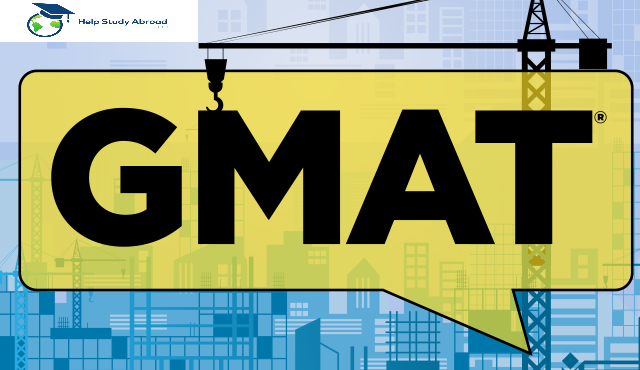Do you know that focusing on the Integrated Reasoning (IR) is a smarter way to crack the GMAT?
One of the unique sections of the GMAT is the IR section, which is distinct from the traditional math and verbal sections of the exam. While many applicants focus primarily on the Quantitative and Verbal sections, the IR section is gaining prominence and requires different strategies and skill sets. In this comprehensive guide, we will explore what the IR section is about, its importance, and how you can prepare for it.
1. What is the GMAT Integrated Reasoning Section?
The IR section of the GMAT is designed to measure your ability to analyze and synthesize data from multiple sources. This section tests how well you can evaluate complex information and make decisions based on that data. Unlike the Quantitative section, which focuses more on solving numerical problems, IR evaluates your ability to work with both qualitative and quantitative data, combining the two to solve real-world business problems.
2. Structure of the Integrated Reasoning Section
- Graphics Interpretation: These questions assess your ability to interpret data presented in various graphical formats, such as charts, graphs, and tables. You may be asked to identify trends, correlations, and make data-based inferences.
- Two-Part Analysis: These questions involve solving complex problems that require you to simultaneously analyze two separate but related pieces of information. You might need to choose the correct answers for both parts of the question based on the data provided.
- Table Analysis: These questions present data in the form of tables. You are required to analyze the table, sort and filter the data, and then answer questions based on the results. They test your ability to handle large data sets and extract meaningful insights.
- Multi-Source Reasoning: These questions require you to evaluate data from multiple sources (e.g., text passages, tables, and graphs) and draw conclusions. You might be asked to select relevant information and combine it to answer a series of questions.

Each question type requires critical thinking, data interpretation, and problem-solving abilities.
3. Why is the Integrated Reasoning Section Important?
In the real world, decision-makers often have to analyze complex, multi-faceted problems that require integrating data from diverse sources, such as reports, graphs, tables, and other documents. The GMAT IR section is a predictor of how well you can handle such tasks.
Moreover, as business schools and employers increasingly emphasize analytical and decision-making skills, the importance of the IR section has grown. Many schools, including top-tier programs, have begun to place more weight on Integrated Reasoning scores. Additionally, some schools have adopted Integrated Reasoning as a key part of their admissions criteria, using it to assess how candidates can handle complex business scenarios.
4. How the IR Section Scored?
The section is scored on a scale of 1 to 8, with 1 being the lowest possible score and 8 being the highest. While it’s a smaller section in terms of the total score compared to the Quantitative and Verbal sections (which are scored on a scale of 0 to 60), the IR score still plays a role in your overall GMAT performance.
The total GMAT score ranges from 200 to 800, with the Integrated Reasoning section contributing to the overall impression of your analytical skills but not directly affecting the final score. Still, a strong IR score can bolster your application and demonstrate your ability to tackle complex business problems.
5. Strategies for Preparing for the GMAT Integrated Reasoning Section
5.1. Understand the Question Types

- Graphics Interpretation: Practice reading and interpreting graphs and charts of different types (line graphs, bar charts, pie charts, etc.) and understand how to extract data from them.
- Two-Part Analysis: These questions often involve logical reasoning and mathematical analysis. Be prepared to solve problems that involve multiple steps, and practice answering questions that require you to work with two different types of information.
- Table Analysis: With table analysis questions, efficiency is key. Learn how to quickly sort and filter data to find relevant information. Familiarize yourself with basic spreadsheet functions like sorting and filtering, as this skill will help you analyze data tables more effectively.
- Multi-Source Reasoning: These questions require you to juggle information from multiple sources. Practice reading quickly and efficiently, and take note of which pieces of data are important for answering each question.
5.2. Practice with Realistic Question Sets
The best way to prepare for Integrated Reasoning is to practice. Use GMAT prep materials and question banks to simulate real test conditions. This will help you become comfortable with the format and types of questions, and it will allow you to track your progress.
Online GMAT preparation platforms often offer practice questions specifically designed for Integrated Reasoning. These platforms can also help you improve your time management skills, ensuring that you don’t spend too long on any one question.
5.3. Improve Your Data Interpretation Skills
Since the Integrated Reasoning section heavily involves interpreting data, it’s essential to be comfortable with numbers, statistics, and graphs. Work on your ability to interpret trends, make comparisons, and evaluate relationships between different data points.
For example, if you’re asked to identify a trend in a graph, look for consistent patterns or fluctuations in the data.
5.4. Time Management
The Integrated Reasoning section allows 30 minutes to complete 12 questions, which gives you about 2.5 minutes per question.
Practicing under timed conditions will help you get a feel for how long you should spend on each question. It’s better to make a guess and move on rather than wasting time trying to solve a challenging question.

5.5. Review Your Mistakes
After completing practice questions or mock tests, spend time reviewing your mistakes. Also, analyze why you missed a particular question and identify any error patterns. By identifying areas where you’re weak, you can target those areas for further practice.
6. Conclusion
The GMAT IR section is an important and challenging part that tests your ability to process and synthesize complex data. While it may seem intimidating at first, understanding the question formats and preparing strategically will set you up for success. Through consistent practice, familiarity with different types of data, and time management, you can maximize your performance in the IR section and strengthen your overall GMAT score.
For more information on GMAT, please follow our blogs regularly. Please contact the Helpstudyabroad Team for more guidance on GMAT and admissions abroad.



